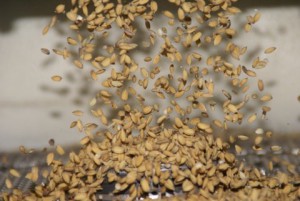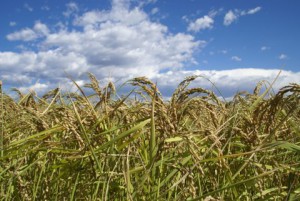Jessika Pini
Italy is the biggest producer of rice in the European Union. 92% of the Italian surface cultivated with rice is concentrated in Piedmont and Lombardy regions, especially in the provinces of Pavia, Vercelli, and Novara. The Italian annual production of processed rice reaches 1 million tonnes, 10% of which are exported to non-EU markets, 35% are sold in the Italian market and 55% in the EU market. This is an important supply chain, which however is heavily influenced by competition from Asian Countries and in the next two years runs the risk of seeing the Italian rice-growing areas halved.
Events during Expo
Ente Nazionale Risi, the Italian body concerning rice, during the months in which Expo takes place is organizing a programme to revive Italian rice, intended to help the international operators to understand the difference between Italian rice, or better the different types of Italian rice, and the production of other Countries. The dinner-conferences organized at Expo will continue until October. They involve professional guests in a journey through the different districts devoted to the cultivation of rice, from Pavia to Novara, Vercelli, Verona, Mantua, Oristano, Alessandria, Biella.
Upcoming events
- On July 3rd 2015 the attention will be focused on the territories of Novara and Alessandria
- On September 11th 2015 on the territories of Biella and Vercelli
- On September 15th 2015 on the territories of Verona, Mantua, and Oristano
- The final event will take place on October 9th 2015
For September Ente Risi, with Fiere di Parma, is organizing an incoming of 20 foreign buyers, selected along with Italian processing industries, at the research centre near Pavia (about an hour drive from Expo), in order to show how this production is carried out in Italy and which are the differences between Italian and non-Italian rice.

The research centre in Pavia has a a germ plasm bank with 1,500 cultivars from which to start in order to create new cultivars
The reasons of its uniqueness
Roberto Magnaghi, general director of ‘Ente Risi’, explains: “Unlike international law, where rice is classified according to its grain (round, medium, long), in Italy it is classified by variety. Italian rice cultivation is based on research of varieties suitable for preparing in the best possible way the various Italian traditional courses based on rice. On the other hand, abroad rice is either a side dish which accompanies the different courses or a substitute for bread. In our Research Centre we have a germplasm bank with 1,500 cultivars, a genetic inheritance from which we start in order to create new cultivars. We must also pay attention to labels. In some foreign products the caption ‘kind of Arborio rice’ is found. This is almost a forgery, because it shows a resemblance to ‘Arborio’ Italian variety, but it is not true’.
Some course – variety pairings
Risotto: Arborio, Carnaroli, Vialone Nano, Baldo, Sant'Andrea.
Soups: Originario (also suitable for sweets prepared with rice, because it absorbs well both water and milk).
Salads: Parboiled.
Single courses and salads: coloured rice.

